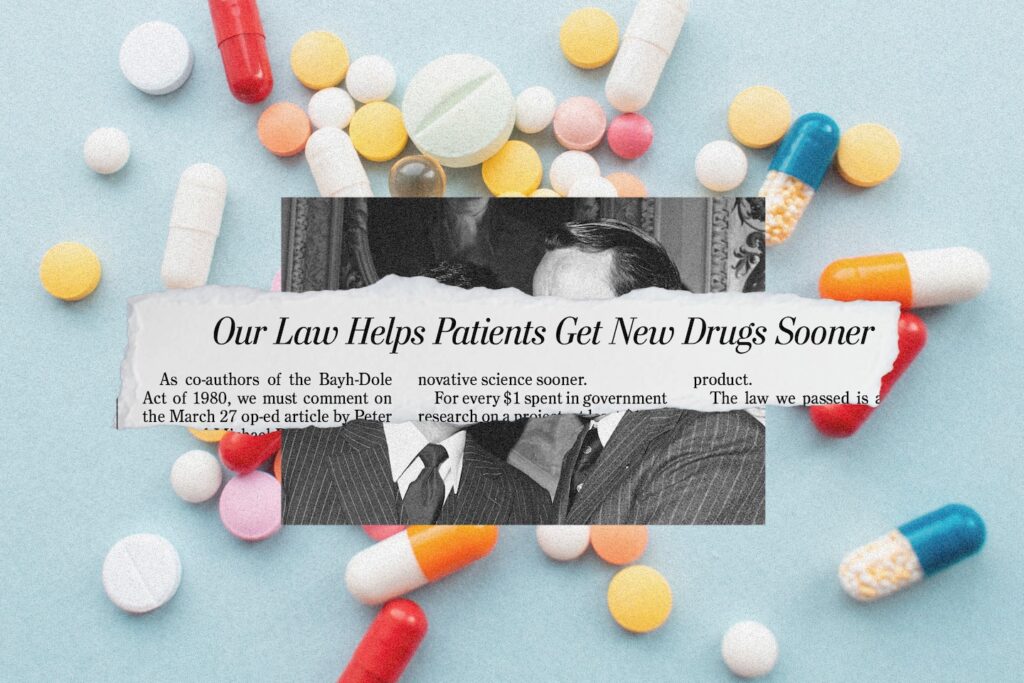Peter S. Arno is a senior fellow and director of health policy studies at the Institute of Political Economy at the University of Massachusetts Amherst. Catherine Ardizzone is an attorney who worked at the medicine access organization Knowledge Ecology International from 2019 to 2022.
A letter to the editor published in this newspaper 22 years ago is part of the reason Americans pay such high prices for prescription drugs today.
Here's the story: In 2002, Peter and his co-authors published an op-ed in The Washington Post arguing that the federal government should step in to lower high prescription drug prices. They wrote that the federal government's power to do so comes from the Bayh-Dole Act of 1980, which created a mechanism known as “march-in rights,” which allows the government to relicense a drug's patent to a generic drug maker if the drug isn't publicly available at a fair price.
Shortly thereafter, The Washington Post published a letter in response to the editorial, written by the sponsors of the Bayh-Dole Act, then-Senator Birch Bayh of Indiana and former Senator Robert Dole of Kansas, who argued that the law was not intended to be used in response to rising drug prices.
Since then, the pharmaceutical industry and its allies have used the letter as a cudgel to thwart any government attempt to curb soaring drug prices for Americans.
Now, the Biden administration is proposing a new march-in right-based framework that could potentially reduce drug costs for millions. Predictably, opponents are trying to undermine the initiative in every way possible, and they are again relying on the Bayh-Dole letter.
It's worth noting that in 1997, Bayh called on the federal government to use march-in rights to address drug prices. But apart from that, the emphasis on this letter is not only wrong, it's misguided. The language of the law is clear: if tax money goes to research and development of a drug, and a manufacturer offers that drug at an exorbitant price, the government has the right to step in.
Moreover, the Supreme Court has ruled that what lawmakers say about laws they propose has little value in determining the meaning of those laws.
A look at the Bayh-Dore Act and its legislative history makes it clear that the letter's assertions are false. According to the Act, the government can exercise march-in rights if a pharmaceutical company has not taken steps to “make available” a government-funded product. The Act defines “make available” as requiring that the product's benefits be “available on reasonable terms to the public.” In practice and in law, making a drug available to the public on reasonable terms clearly means making the drug available at a reasonable price.
Legislative history also supports the government's right to respond to high drug prices. At the time the bill was passed, Congress' concerns about the march-in right centered on maintaining a competitive playing field, curbing profits, and preventing drug manufacturers from overcharging. The march-in provision became a linchpin in congressional negotiations on the bill, as Congress wanted to balance the “public fairness” that results from taxpayer dollars going into the production of these patented products with the wishes of private industry.
The Senate committee overseeing the Bayh-Dole Act suggested that march-in rights were intended to “reassure the public” and prevent windfall profits. U.S. Navy Vice Commander Hyman Rickover testified before the House of Representatives, “Imagine the public outrage if, under the terms of this bill, a contractor made a major breakthrough at public expense. Would it be appropriate for that company to have 17 years of exclusive control over the distribution, use and pricing of that work, at the government's expense? I don't think so.” Senator Russell Long of Louisiana testified, “There is no reason why taxpayers should be forced to subsidize a private monopoly and pay twice, once for research and development and once for the monopoly price.” March-in rights were the compromise that helped pass the bill.
As today, during the bill's deliberations in Congress, there was strong resistance from the pharmaceutical industry, which profits from free pricing. Drug companies saw march-in rights as a powerful tool by which the government could cut into their profits. Despite their opposition, Congress passed the bill with the march-in provisions intact. The industry's fierce opposition is a testament to what they stand to lose and what the government and taxpayers stand to gain.
Americans are struggling with the cost of healthcare right right now. Nearly one in five adults (21%) say they don't fill prescriptions because of the cost. More than 40 years after Congress created the right to march in, the Biden administration is finally in a position to enforce it. The law's clear language and legislative history ensure the White House is well within its rights to do so — despite a 20-year-old letter to the editor.



